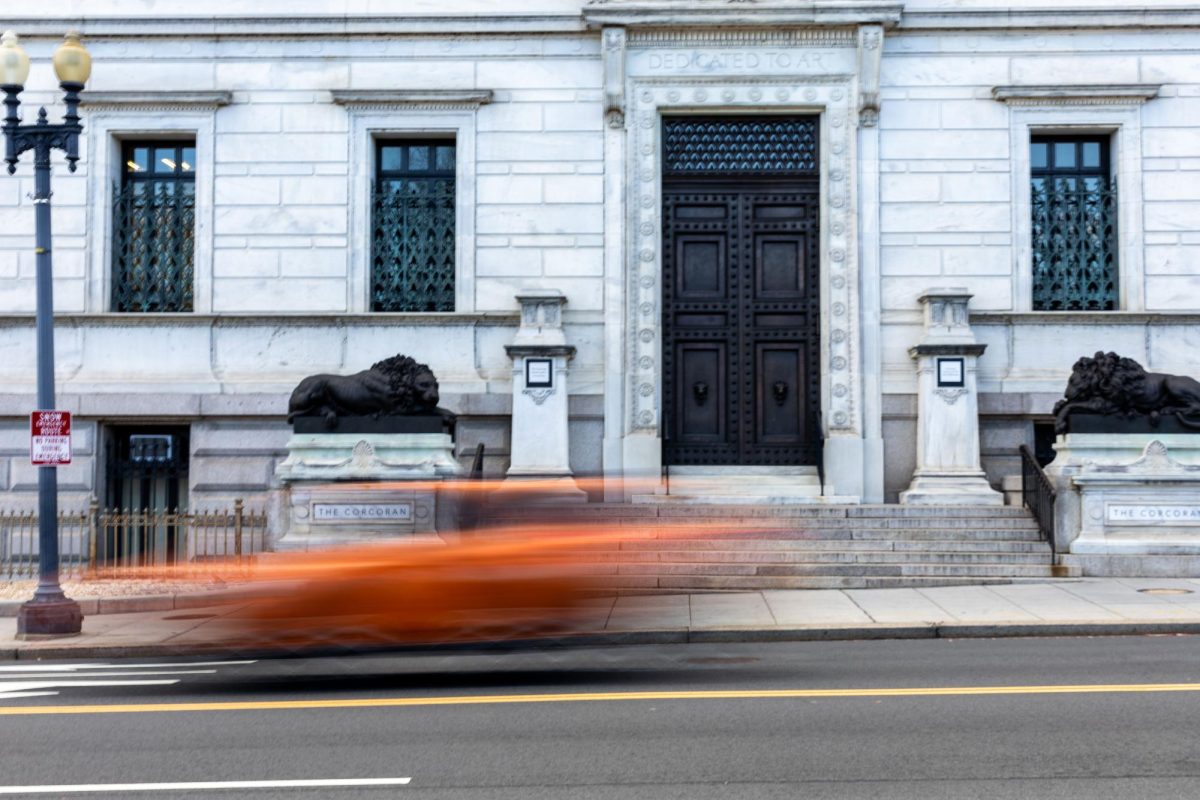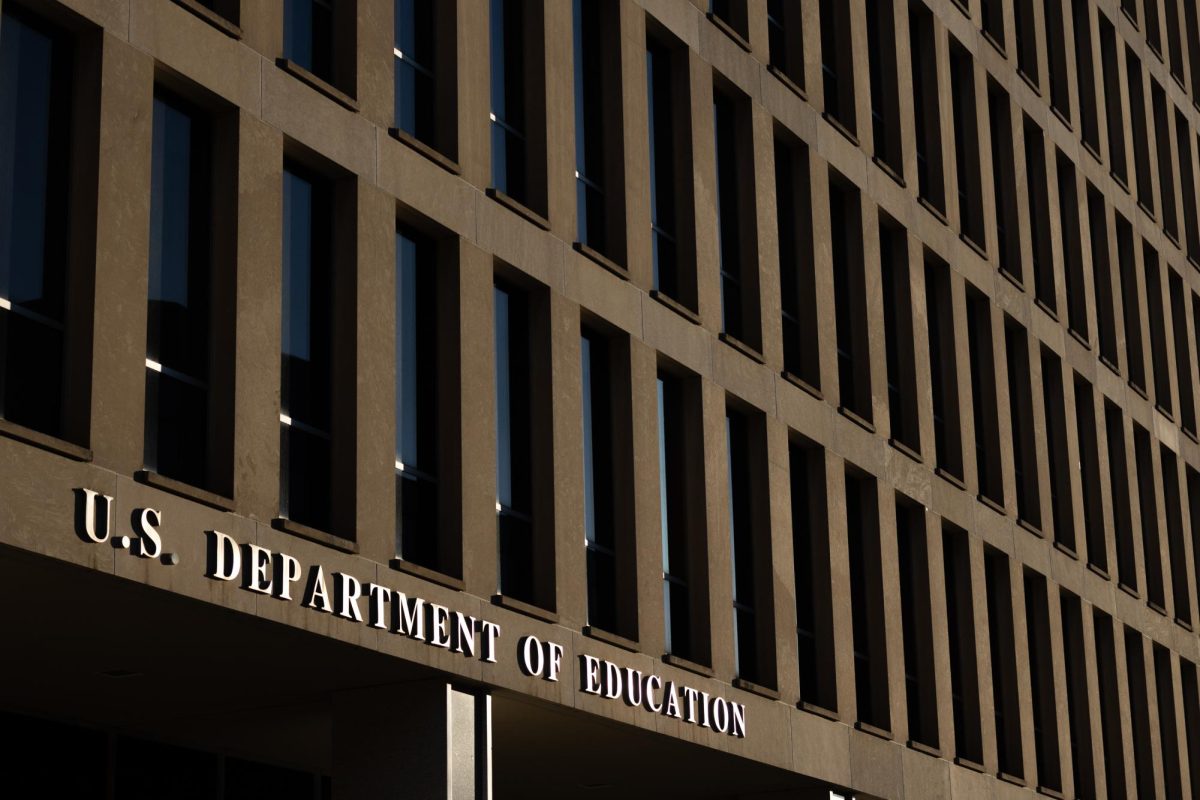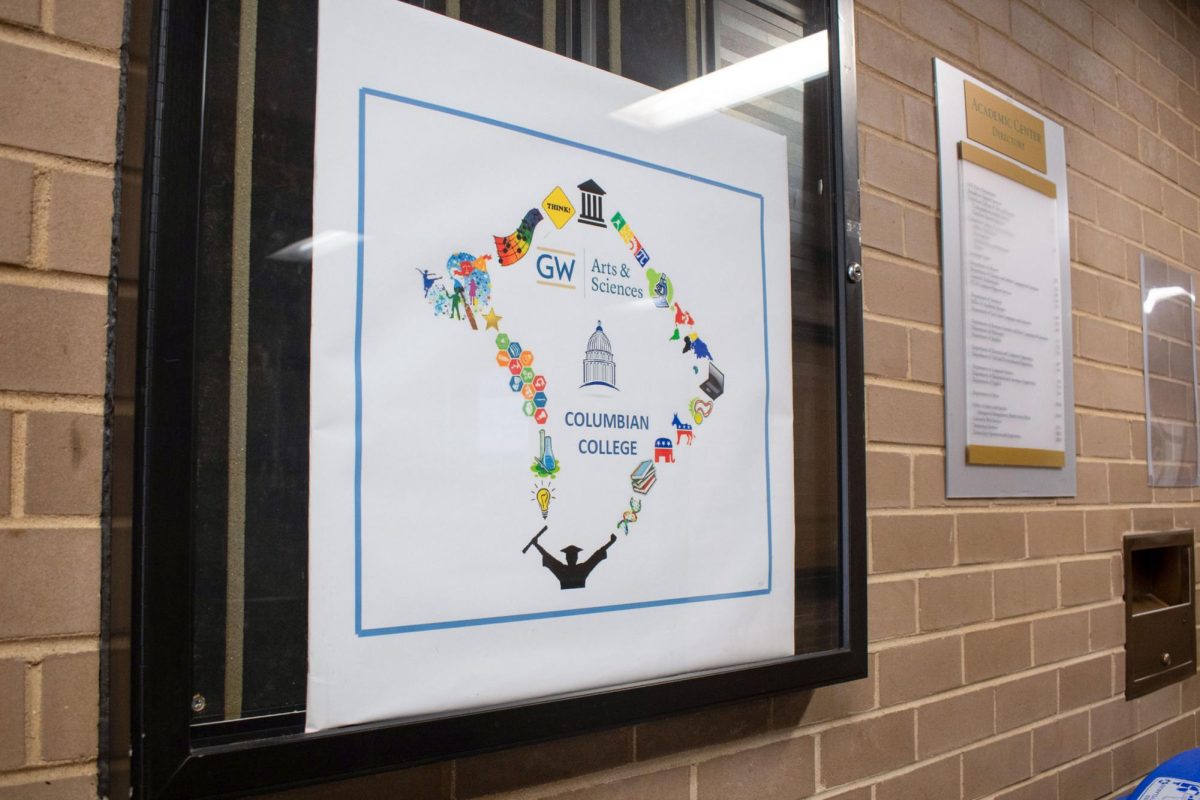Updated: March 6, 2024, at 10:37 a.m.
A decade after GW’s tumultuous acquisition of The Corcoran Gallery of Art was met with calls to “Save the Corcoran,” the Corcoran School of the Arts and Design has persevered through culture shifts, renovations and the loss of its art collection to expand its reach into the arts.
The Corcoran Gallery of Art — D.C.’s oldest private art museum and college of art and design before its dissolution — had begun talks in the early 2010s with institutions like GW and the University of Maryland in an attempt to resolve the art school’s financial crisis. In February 2014, it was announced that GW would take ownership of the Flagg Building and the gallery’s College of Art and Design would integrate into the University.
Under GW, Corcoran has expanded to include performing arts majors and other fine arts studies as well as partnered with the National Gallery of Art to offer students opportunities for collaboration in performing and visual arts and museum studies.
As part of the terms of the merger, the National Gallery became responsible for the examination and distribution of Corcoran’s 17,000 pieces of art. Most of the art was distributed to the gallery post-merger and the rest was donated to museums, universities and organizations, many of the works staying in the District.
Corcoran and the National Gallery revised their agreement in fall 2023 after leadership changes at both institutions and have begun renovating gallery spaces in the Flagg Building for collaborations on art exhibitions, performances and teaching exercises between academic departments and the two institutions. Faculty said the agreement, alongside Corcoran’s expansion to include other forms of art, are positive effects of the acquisition but have changed the fabric of the school.
Lisa Lipinski, an associate professor of art history who chaired Corcoran while it was an independent school, said folding the small school into GW was a “blow” to Corcoran’s tight-knit culture because they lost a college that was solely focused on the visual arts. She said students have tried to reignite the school’s visual arts community by forming student organizations centered around art.
“We had this small village, the tight-knit community,” Lipinski said. “Now we’re part of this big, big University and I think they lost the community spirit and students have continued to kind of revive it in various ways.”
At the time of the merger’s finalization, the Corcoran College of Art and Design brought about 180 fine arts undergraduate students to the University’s student population. As of 2023, there are currently 348 students who hold a primary major in Corcoran, according to the enrollment dashboard.
Lipinski also said the school only offers a Bachelor in Fine Arts in photojournalism after cutting the fine art photography major post-merger, due to fewer students entering the fine arts because of concerns about job opportunities. Lipinski also said the school has added a minor in graphic design since the merger.
“Fewer people are trying to do fine art, so students are coming in, they’re worried about careers and jobs, and so they cut that program,” Lipinski said.
She said the school also expanded its faculty because the two schools’ faculty were combined, but later laid off 10 faculty members in 2016. The cuts were met with students and faculty calling for greater transparency from GW. Officials said they made the cuts after accounting for enrollment and the future operating budget.
“We had other academic faculty and they were eventually laid off, they lost their jobs after a few years,” Lipinski said.
Lipinski added that students were formerly able to have their artwork displayed in the Corcoran’s museum and that the loss of the art due to the merger is a detriment to students as they can no longer easily access it as a resource.
“They could say that, ‘I had my senior show in an art museum.’ Not many students get to say that,” Lipinski said. “So today, it’s another University building with beautiful galleries and we still install art, but it’s not the same.”
Lauren Onkey, the director of Corcoran and a professor of music, said after the acquisition, GW expanded the arts and design at Corcoran by putting music, dance, theatre, art history and interior architecture under the school’s umbrella.
“GW took on the school and then said, ‘Okay, let’s, let’s put together this broader constellation of the arts at the University,’ which I think makes us stronger,” Onkey said.
Onkey added that Corcoran being a part of GW opens up opportunities for Corcoran students to study other fields outside of the fine arts.
“They’re connecting across GW with double majors and minors and just other coursework in ways that are really creative and exciting,” Onkey said.
University spokesperson Julia Metjian said Corcoran expanded to offer degrees in performing arts as well as museum studies, art history and interior architecture in 2017 and now offers 22 undergraduate and graduate degrees.
Kathryn Knox, a graduate alum who studied at Corcoran during the time of the acquisition, said in the summer of 2014 GW officials held a meeting with Corcoran students to explain the merger. She was told she was able to either stay in Corcoran’s interior design program or switch to GW’s design and architecture program.
“The administrators from GW were very knowledgeable and kind, but they basically said, ‘We know nothing about the Corcoran program,’” Knox said.
Knox said when she switched to GW’s program, she was able to achieve a master’s of fine arts, whereas Corcoran only offered a master of arts degree. She added that it felt like there were two programs, the Corcoran program and the GW program, but they weren’t unified.
“I really liked the GW program, they were different, and because I had done a bit of Corcoran and a lot of GW, I kind of felt like I got the best of both worlds,” Knox said.
Alex Horowitz, a senior studying interaction design, said two years ago she helped start a Corcoran student organization, the School of Arts and Design Student Association, with the main goal of increasing Corcoran’s presence on campus, but the club didn’t “stick” and has since dissolved.
Horowitz also said she faced advising issues within Corcoran and that CCAS advisers often don’t understand Corcoran’s specific requirements. Often, Corcoran classes are listed as electives instead of as requirements for her major on DegreeMAP, she said. She said she spoke to CCAS advising last year and they were unsure if she was going to graduate because of this error, despite that she had met all of her requirements.
“My major, interaction design, it’s really small,” Horowitz said. “And when I talk to advisers they have never even heard of my major, so it’s really hard to get great advising.”
This post was updated to reflect the following:
A prior version of this post referred to Corcoran as the Corcoran School of Art and Design. It is the Corcoran School of the Arts and Design. We regret this error. This post has also been updated to include fields of study added to the school’s offerings after its acquisition.





